Rare Rides Icons: The History of Imperial, More Than Just a Car (Part XVIII)

In our most recent installment of our long-running Imperial coverage, the Eighties dawned with a resurrection of the Imperial name and the debut of an exciting new personal luxury coupe. Chrysler’s new chairman Lee Iacocca was determined to recreate the runaway success he’d had at Ford with the Lincoln Continental Mark III. But that meant a simultaneous ask that luxury coupe buyers ignore the very recent financial troubles that plagued the Detroit automaker. And while the exterior of the new Imperial coupe was all bustleback and new angles, its platform and mechanicals were not quite as exciting. Let’s talk about Mirada, Cordoba, and the reliability benefits of electronic fuel injection.
Underneath the new Imperial was Chrysler’s year-old J platform, which was used on Chrysler’s rear-drive coupes in the early Eighties. It debuted in 1980 on the new affordable personal luxury Dodge Mirada ( Magnum replacement) and the second generation of the mid-market personal luxury Chrysler Cordoba. Cordoba made a very successful name for itself when it debuted in 1975 as a luxurious and baroque full-size two-door on the B-body platform. For 1980 its second generation was downsized and de-rococoed considerably, as was de rigueur at the time.
Though the J-body was labeled as a new dedicated two-door platform at Chrysler, those in the know realized it was actually a rebranding of the F-body that resided underneath the Dodge Aspen and Plymouth Volaré since 1976. In fact, the new trio of Js had the exact same 112.7-inch wheelbase as the K-body Volaré sedan and wagon. In prior decades, an Imperial that shared its wheelbase with a Dodge would not have passed muster. But it was the Eighties, and cash savings mattered!
The Mirada and Cordoba were distinguished from the Imperial not only by notable styling differences but also by their size. The Mirada was 209.5 inches overall, 72.7 inches wide, and 53.3 inches tall. As one would expect, the more expensive Cordoba version was slightly longer: 209.8 inches in its debut year. It shared the 72.7″ width of the Mirada, as well as its height. Unlike the Mirada, Cordoba changed its shape slightly from 1981 onward, and for the sporty LS variant. When it was introduced for 1981, the Imperial wore a larger suit than its siblings: 213.3 inches of overall length. Width was the common 72.7 inches, though Imperial was closer to the ground for a longer and lower look, at 52.6 inches.
Keen to illustrate the Imperial as a rebirth of the marque, Chrysler furnished this handy comparison image for 1981. In black were the dimensions and outline of the deceased and unpopular 1975 Imperial coupe. In front of it in white was the new Imperial, showing the tidier wheelbase, lower height, and much shorter overall length than the 1975 Imperial. Perhaps the goal was to show how the brand had moved on in its modern form. But advertising like this also reminded luxury buyers they were paying much more for a much smaller car than a few years prior.
Sixth-generation Imperials were all powered by the same engine: The 318 cubic inch (5.2-liter) LA V8. The 318 was good for 140 horsepower, and 245 lb-ft of torque. Its lesser siblings used this engine as an optional extra, but also offered a 225 cubic inch (3.7L) Slant 6 as their standard motivation, or an optional 360 V8 (5.9L), but only in 1980. Worth noting: The 318 made 10 fewer horsepower when used outside the Imperial, for reasons we’ll discuss in a moment.
There was a singular transmission in all the J cars, the three-speed A904 TorqueFlite automatic. The A904 was a robust and long-lived transmission, which started out in life in 1960, was later borrowed by AMC, and was used in the Jeep Wrangler through 2002. For the Imperial, Chrysler used tall gearing on the three-speed and implemented a final drive ratio at a lazy 2.24:1. Top speed was a reported 103 miles per hour, but it took a long time to get there – 13 seconds. In fairness, that was an impressive .2 seconds faster than a 2.5-liter Chevrolet Citation in 1981.
The Imperial took a long time to stop, too. Though it was an expensive and high-tech car, all the luxury equipment meant it was about 500 pounds heavier than its Dodge and Chrysler siblings (Imperials tipped the scales at 3,900 pounds.) But Imperial used the same front disc, rear drum brake setup as found in the J- and M-body cars. While on the topic of parts sharing, it should be noted that the expensive Imperial borrowed its suspension directly from the Cordoba. That meant a front transverse torsion bar, and uneven length control arms at the rear with leaf springs and anti-roll bar. Chrysler threw in two insulated crossmembers to help differentiate the ride from a cheaper Cordoba. Everything was as soft as possible for a “luxurious” ride, but the cut-rate components meant the Imperial lost its composure easily, and frequently.
Though the 318 was shared with other Chrysler offerings, there was an exciting difference for the Imperial: electronic fuel injection (EFI). Lincoln and Cadillac brought out their own electronic fuel injection systems in 1980, and Chrysler needed to compete on technology. Chrysler had a history of developing electronic ignition systems and computer-driven engine management systems, both of which it implemented in its prior Imperial offerings. The new system was developed at a Chrysler tech center in Huntsville, Alabama.
It was the first electronic fuel injection system ever from Chrysler, and engineers obtained a whopping 24 new patents during the system’s development. The team who worked on the EFI were the same engineers who managed the electronics on NASA’s Apollo space program (1961-1972), a fact Chrysler was keen to recognize. But perhaps the guys accustomed to working on spacecraft were not so suited to something as practically applicable as an automobile.
The new Imperial’s fuel injection was different from a modern system. Where modern fuel injection manages fuel mixture based upon how long an injector is kept open via an electrical current, the Imperial system worked via the engine’s varying pressure. There were two different fuel pumps: A standard one in the fuel tank, and a secondary that controlled fuel delivery to the engine. The secondary pump used injector valves controlled by pressure, as mentioned. It was basically a mechanical injection system with electrics attached to it.
The EFI system had a wide variety of Imperial-specific components and was applied to the 318 via a newly redesigned intake manifold, where the EFI components were attached atop the manifold. Compared to a carbureted 318, the Imperial had a much sharper throttle response and was more thrifty with the fuel. Where a 1981 Mirada with a carbureted 318 managed only 17.5 miles per gallon on average, the larger and heavier Imperial was rated at 23 mpg. In the same year, a Cadillac Eldorado with the V8-6-4 ( oh boy) was rated at 21.5 mpg.
Those aforementioned Imperial-specific EFI components made for a very complicated system. When an Imperial developed an EFI fault, mechanics at Chrysler’s dealerships were unfamiliar and not always trained to diagnose issues properly. And there was a reason domestic competition didn’t follow Chrysler’s mechanical approach to EFI: It wasn’t reliable. An issue Chrysler engineers neglected to consider with its EFI component placements was a big one: Temperature. Every electric component sat on top of the hot intake manifold where it was baked every time the Imperial was driven. The extreme conditions weren’t kind to the sensitive components. That caused parts to fail, and because the system was so complicated mechanics had a difficult time in diagnosis.
After the Imperial was on sale with its troublesome EFI for a short time, it was a common occurrence for dealers to chuck the entire thing and convert the coupe to the 318’s typical carburetor setup. It meant the loss of 10 horsepower and a couple of miles per gallon but kept well-heeled Imperial buyers out of the dealer’s service bay.
Not that there were many Imperial buyers anyway, though. The car’s incredible base price, electrical issues under hood and dash, and clear connection to both lesser contemporary and 1970s Chrysler products pushed PLC buyers toward the established brands at Lincoln and Cadillac. Next time we’ll move indoors and talk about fancy digital gauges and late Seventies interior styling.
[Images: Chrysler]

Interested in lots of cars and their various historical contexts. Started writing articles for TTAC in late 2016, when my first posts were QOTDs. From there I started a few new series like Rare Rides, Buy/Drive/Burn, Abandoned History, and most recently Rare Rides Icons. Operating from a home base in Cincinnati, Ohio, a relative auto journalist dead zone. Many of my articles are prompted by something I'll see on social media that sparks my interest and causes me to research. Finding articles and information from the early days of the internet and beyond that covers the little details lost to time: trim packages, color and wheel choices, interior fabrics. Beyond those, I'm fascinated by automotive industry experiments, both failures and successes. Lately I've taken an interest in AI, and generating "what if" type images for car models long dead. Reincarnating a modern Toyota Paseo, Lincoln Mark IX, or Isuzu Trooper through a text prompt is fun. Fun to post them on Twitter too, and watch people overreact. To that end, the social media I use most is Twitter, @CoreyLewis86. I also contribute pieces for Forbes Wheels and Forbes Home.
More by Corey Lewis
Latest Car Reviews
Read moreLatest Product Reviews
Read moreRecent Comments
- Ajla IMO, something like this really should be naturally-aspirated.
- Kjhkjlhkjhkljh kljhjkhjklhkjh Unless they are solid state batteries you BAN THEM. I like EVs... but EVs like to burn ... for days
- Kjhkjlhkjhkljh kljhjkhjklhkjh uh .. it looks like a VW golf got the mumps
- Kjhkjlhkjhkljh kljhjkhjklhkjh I CANNOT WAIT FOR SOCIAL SECURITY TO GET GUTTED.. No i am really serious. I am insulated thanks to 24 years at Symantec then Broadcom .. tons of retirement cash. but all the blue hairs and low income trump voters are going to lose benefits and jobs and i get to laugh allllll dayyyyy long in about 2-3 years.. CANNOT WAIT, POPCORN READY.
- Kjhkjlhkjhkljh kljhjkhjklhkjh no. to many '''''americans'''' just want a CUV or SUV according to sales numbers




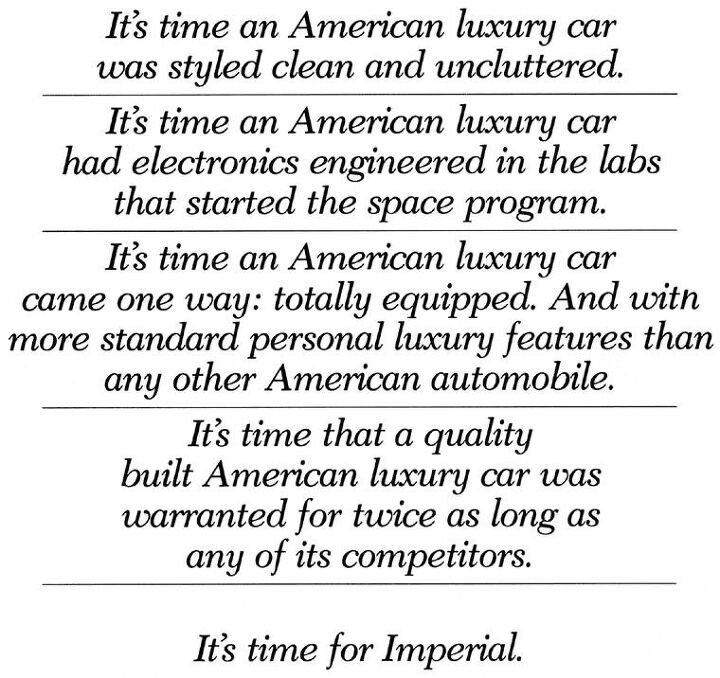






















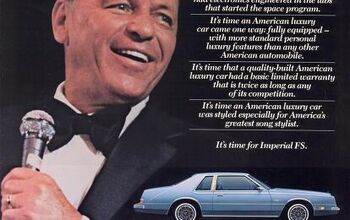
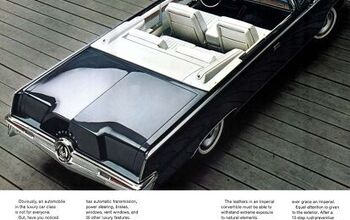
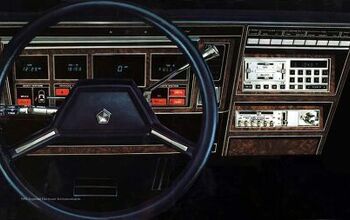
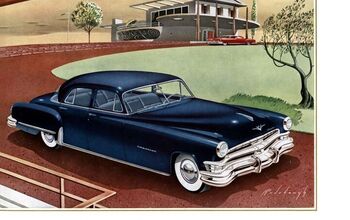
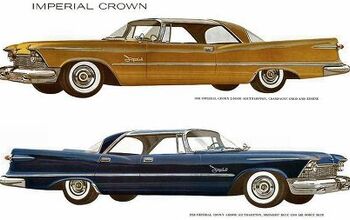










Comments
Join the conversation
You mean the 80's Imperial, including the Frank Sinatra version, was based on the Dodge Aspen? As Rex Harrison would sing, "Unbelievable"!
Is this the end? Do we get to read about Frank Sinatra Imperial?